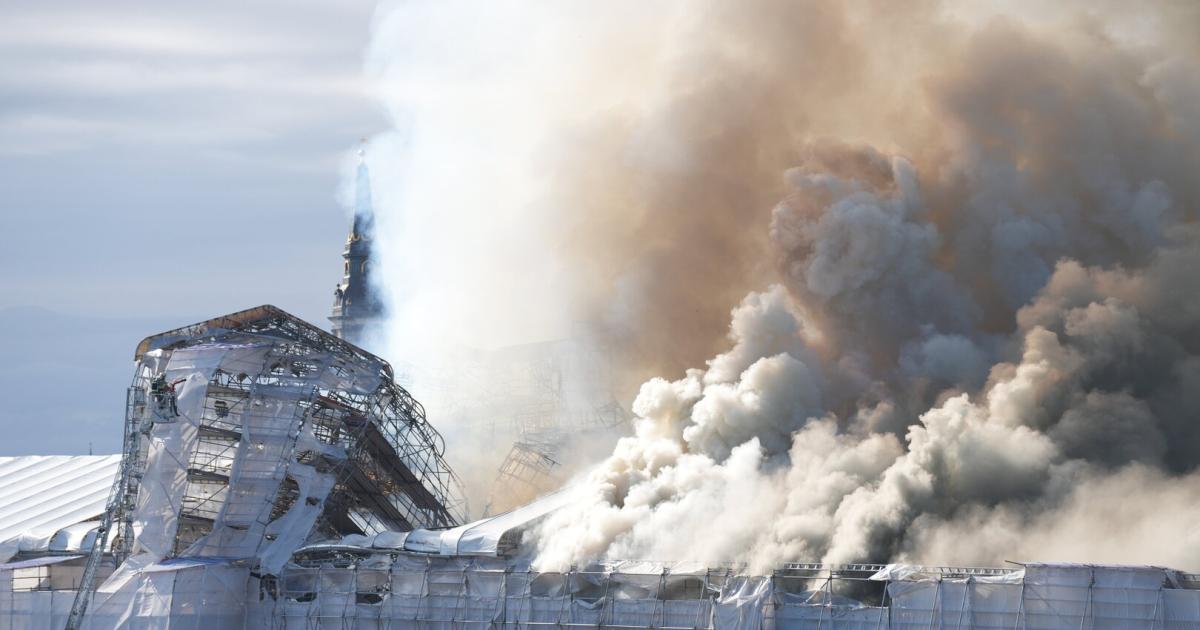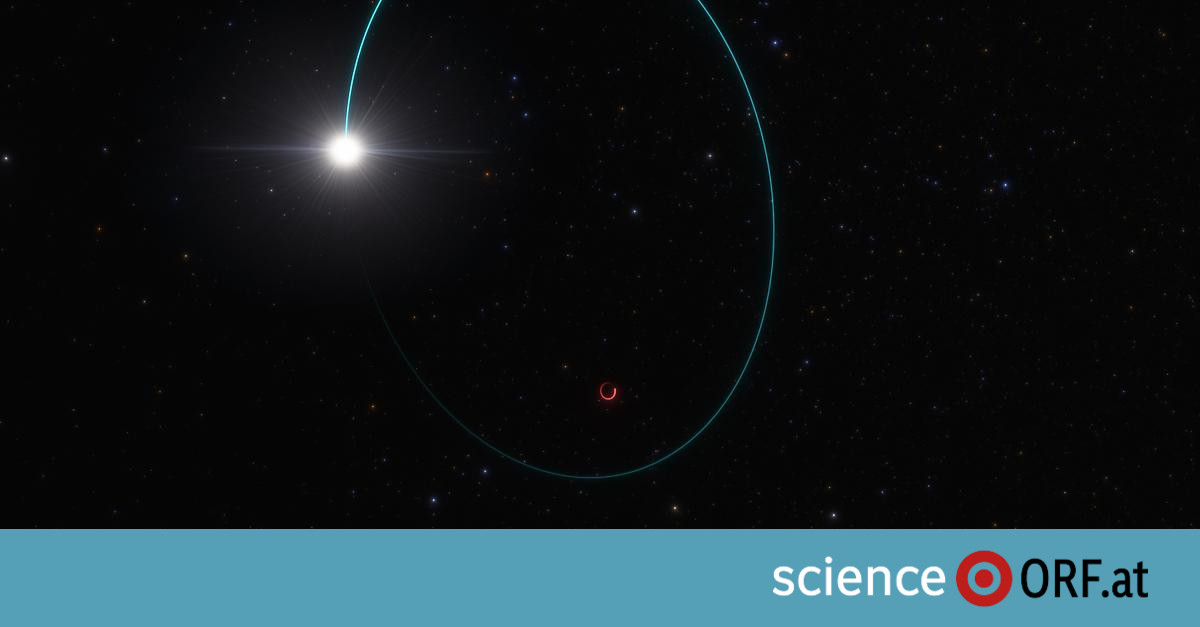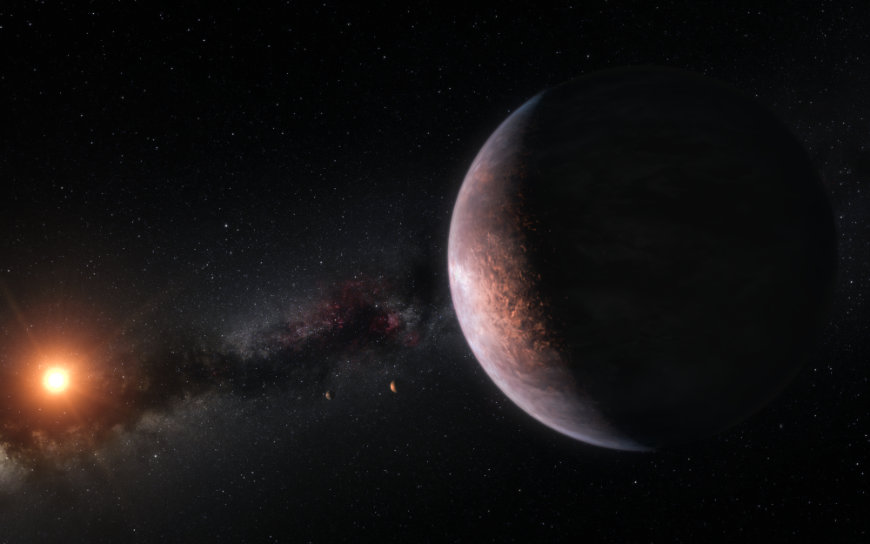Almost no collisions occur in the TRAPPIST-1 planetary system
Seven Earth-sized planets orbit the star TRAPPIST-1 in almost perfect unison. A study presented now shows that these exoplanets were unaffected by colossal impacts and collisions with other celestial bodies during their formation. This may also have consequences for the habitability of the realms.
|
Artistic representation of the TRAPPIST-1 planetary system. [Groansicht] |
The star TRAPPIST-1 is located about 40 light-years from our solar system, much smaller and cooler than our sun. It has seven planets roughly the size of Earth orbiting around it – the largest group of such planets ever found outside our solar system. They are named alphabetically from b to h, in order of their distance from the star. The time that the planets need to orbit around the star – which corresponds to one year on Earth – is 1.5 days for Planet B and 19 days for Planet H.
Remarkably, the orbital times of the planets are in almost perfect relationship with each other, in the so-called order of resonance, which is reminiscent of harmonic musical notes. For example, eight “years” pass on Planet B, five on Planet C, three on Planet D, two on Planet E, etc. Simon Grimm of the CSH Center for Space and Habitat at the University of Bern has calculated the parameters of the orbits of the TRAPPIST-1 planets and their long-range behavior for a study now presented. “In the current study, we examined the effects that TRAPPIST-1 planets would have survived without breaking out of harmonic equilibrium,” Grimm explains.
Planets form in so-called protoplanetary disks of gas and dust around newly formed stars. These discs only last a few million years. Computer models have shown that resonant planetary chains such as those in TRAPPIST-1 arise when young planets approach their star after formation, thus organizing themselves in a resonant manner. The researchers hypothesize that resonant chains such as those in TRAPPIST-1 must have formed before the protoplanetary disk disappeared.
“The TRAPPIST-1 planets formed quickly, about a tenth of the time it took the Earth to form,” explains Andrei Isidoro, an astrophysicist at Rice University who was also involved in the study. After the rocky planets form, they usually collide with other celestial bodies. “This is called late accretion or bombardment,” explains team member Sean Raymond of Purdue University. “We’re interested in it because these effects could be an important source of water and volatile elements that could favor life on this planet.”
The history of the impact on the planets in our solar system is already difficult to decipher. “In the case of planetary systems light years away, a seemingly hopeless task is simply not possible to examine craters or even rock samples due to the large distance,” Grimm explains. So the researchers looked at the special orbital configuration of the TRAPPIST-1 planets. “While we can’t exactly quantify the amount of material that collided with one of the TRAPPIST-1 planets, we can set an upper limit because of their order of resonance,” Raymond says. “With the help of computer simulations, we found that these planets were bombarded with very little material after their formation.”
If a planet formed early and was too young, it wouldn’t be able to absorb much gas from the disk. According to the researchers, such a planet also has much lower chances of extracting volatile elements through late bombardments, which will be crucial for the evolution of life. For example, if one of the TRAPPIST-1 planets contains a lot of water, the water must have been incorporated into the planet at an early stage. One possible difference in Earth’s composition could be that the TRAPPIST-1 planets had hydrogen atmospheres from the start.
As the researchers believe, this, in addition to the small number of impacts, could have a significant impact on development within the planet, the release of gases, the loss of volatile components and other things that affect habitability. Raymond believes that the current study has implications not only for the study of other resonant planetary systems, but also for the more common exoplanet systems that are thought to have started as resonant systems.
“Super-Earths and sub-Neptunes are very common around other stars, and the prevailing idea is that they migrated inward during the gaseous disk phase and likely occurred in a late stage of collisions,” Raymond explains. “But during that early stage of inward migration, we think they have the stage of forming resonant chain structures like TRAPPIST-1.”
who – which James Webb Space Telescope NASA or that very large telescope The European Southern Observatory (ESO) will make it possible in the future to directly observe the atmosphere of exoplanets. “These observations will provide us with more information, for example about the possibility of possible habitation of planets,” says Grimm.
The team publishes its findings in a specialized article in the journal natural astronomy He appeared.
|
|
|
|
|
|

“Total coffee aficionado. Travel buff. Music ninja. Bacon nerd. Beeraholic.”








